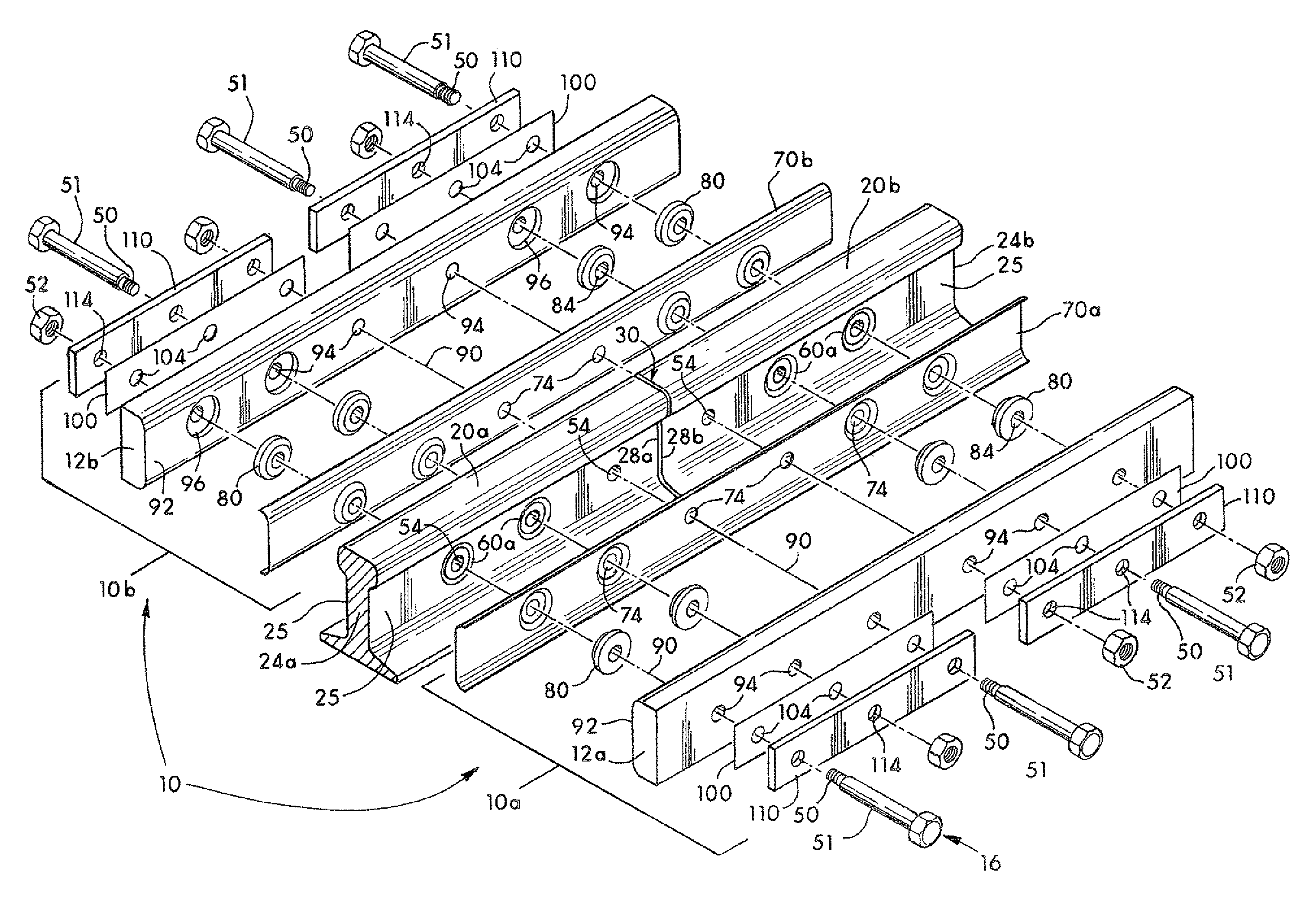Rail joint assembly using embedded load transfer keys and method therefor
a load transfer key and load transfer technology, applied in rail joints, roads, constructions, etc., can solve the problems of service reliability, service delay and additional costs incurred due to service delays and/or failures, and achieve the effect of strengthening the joint and minimizing the effects of environmental stress on the join
- Summary
- Abstract
- Description
- Claims
- Application Information
AI Technical Summary
Benefits of technology
Problems solved by technology
Method used
Image
Examples
Embodiment Construction
[0029]In FIG. 1, the rail joint assembly 10 of the invention is shown joining two rails 20a and 20b together at a joint 30. This occurs on conventional railroad track (not shown). The rail joint assembly 10 functions to transfer railway load forces on the two rails 20a and 20b from one rail to the next rail using components that both strengthen the rail joint and minimize component failure therein.
[0030]Each rail 20a and 20b has a head 22a and 22b, a web 24a and 24b, a base 26a and 26b, and an end 28a and 28b, respectively. The rails 20a and 20b are conventional and are of a thick web, regular web or any desired web construction. In the embodiment of FIG. 1, the rails 20a and 20b are identical and a thick web rail is illustrated. At joint 30, a conventional spacer 32 may be inserted between the two ends 28a and 28b. The spacer 32, in some applications, is an insulator to provide electrical isolation between the two ends 28a and 28b.
[0031]One side 10a of the rail joint assembly 10 i...
PUM
 Login to View More
Login to View More Abstract
Description
Claims
Application Information
 Login to View More
Login to View More - R&D
- Intellectual Property
- Life Sciences
- Materials
- Tech Scout
- Unparalleled Data Quality
- Higher Quality Content
- 60% Fewer Hallucinations
Browse by: Latest US Patents, China's latest patents, Technical Efficacy Thesaurus, Application Domain, Technology Topic, Popular Technical Reports.
© 2025 PatSnap. All rights reserved.Legal|Privacy policy|Modern Slavery Act Transparency Statement|Sitemap|About US| Contact US: help@patsnap.com



